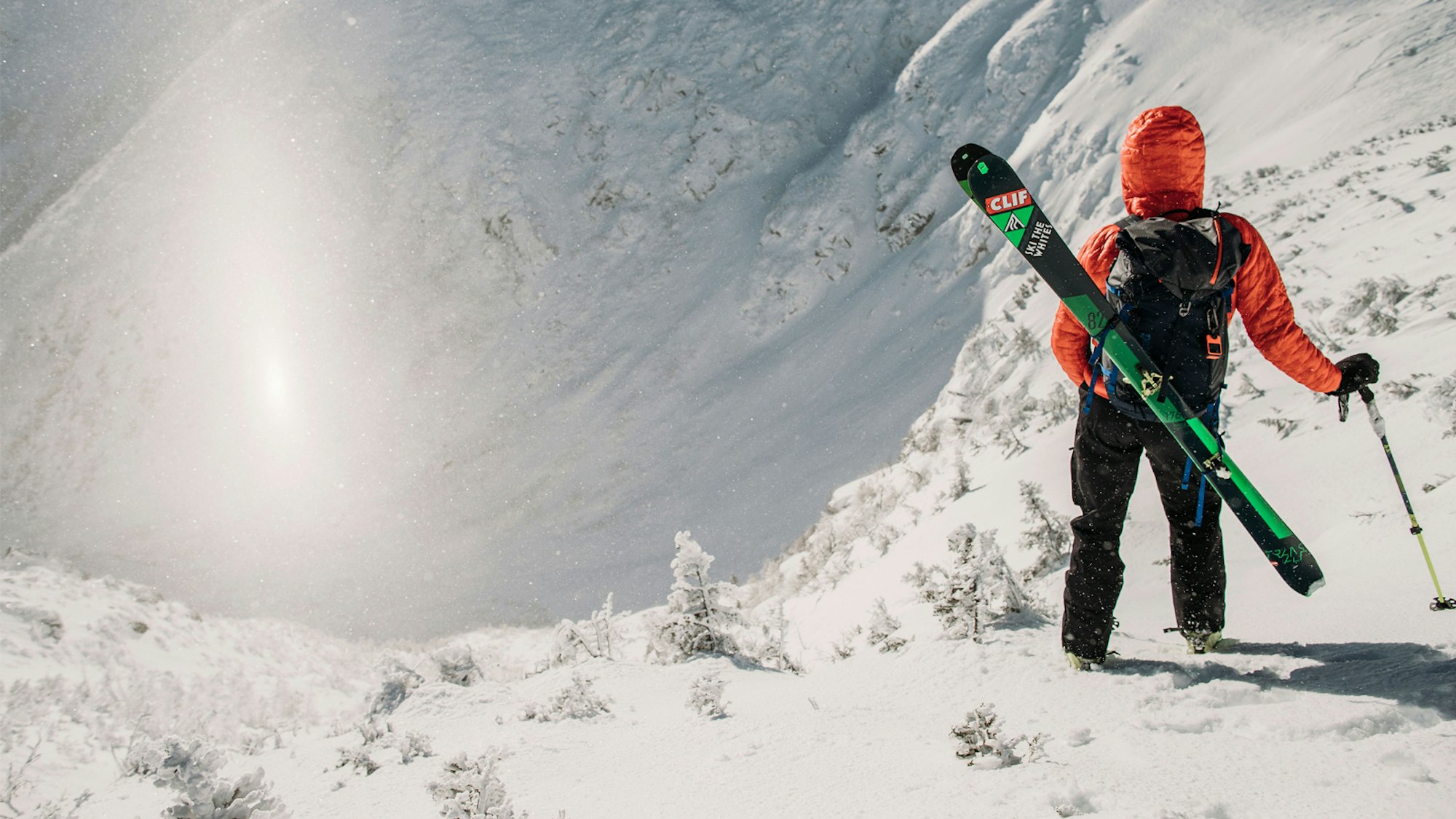Smack-dab in the middle of New England, the Whites’ terrain and culture is so profound you can see and sense it from the Atlantic
There are two origin stories behind the White Mountains’ name. One tale points to the area’s abundance of granite. New Hampshire is the Granite State, after all; the place is covered in pale igneous rock from its coasts to its mountaintops. But the other narrative points to snow. It’s said that, during colonial times, explorers saw the Whites’ snow-capped peaks all the way from the Atlantic Ocean as they sailed to shore.
I prefer the latter story. So much, in fact, that I spontaneously drum up specific plotlines in my head—narratives of wig-wearing colonists peering through brass monoscopes and talking to one another about the snowy, above-treeline terrain of their new home.
“Look upon those lines, Sir William! Deep powder awaits, indeed!”
“Agreed, Sir Winchester! I wish for a bounty of cliffs and couloirs upon a more thorough expedition!”
No matter the story, the Whites have naturally proven to be some of the greatest mountains in America. Tucked smack-dab in the middle of New England, the range boasts superior elevations, impressive snowfall, challenging terrain and a down-home culture that just feels good. In other words: From the ski areas to the backcountry, the Whites provide everything those wig-wearin’ colonists hoped for, and more.
Among the Whites’ roster of ski areas, Wildcat consistently ranks as a fan favorite. Its story began in 1933 when the Civilian Conservation Corps carved out the historic Wildcat Trail—a long, steep, narrow route that helped form America’s earliest ski culture. Of course, infrastructure followed and the mountain has evolved over the years; Wildcat was actually home to the United States’ first gondola, installed in 1957 and later replaced by a high-speed quad that whisks you from base to summit in about seven minutes. Today, the mountain boasts a 2,112-vertical-foot-drop over 225 skiable acres. But two things have remained constant throughout history: the raw feel of its terrain and its unsurpassed views of Mount Washington.
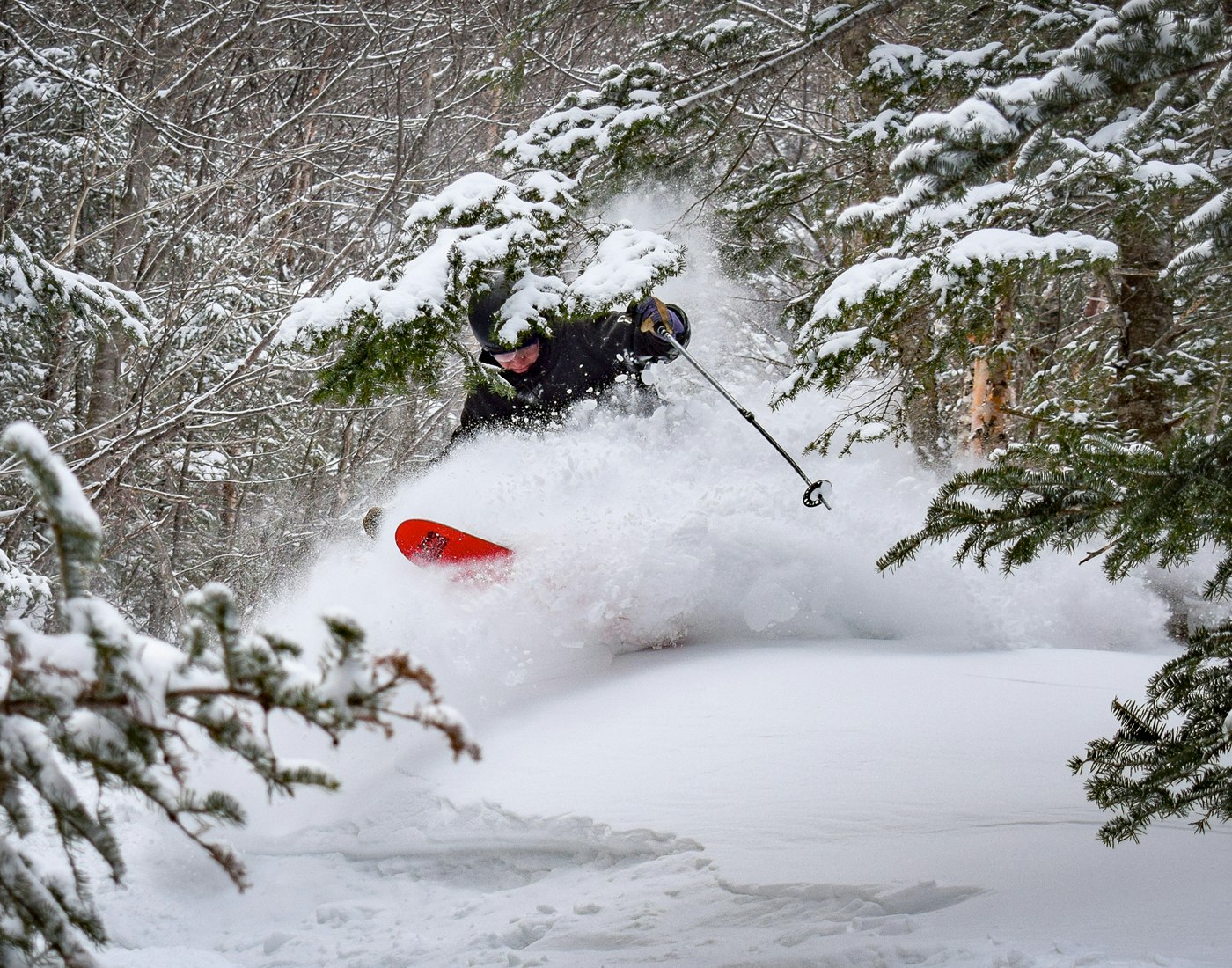
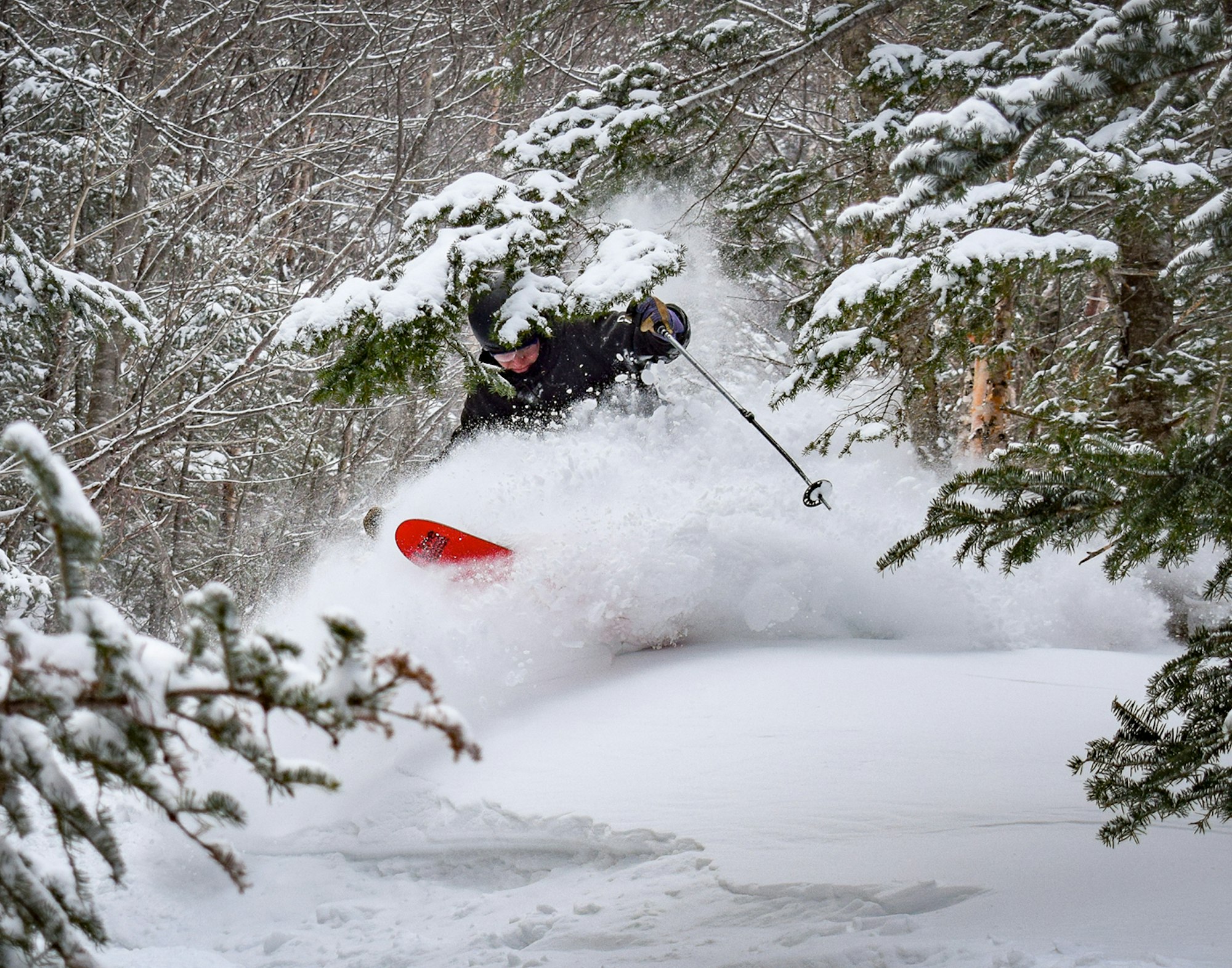
SKIER: David Baird | PHOTO: Nate Ramsbottom | LOCATION: Wildcat, NH
On a clear day, said views are absolutely stunning for even the most worldly skiers. From the 4,062-foot summit, you’re staring at Washington dead-on and witnessing a sight that’s entirely unique on the East Coast—a 6,288-foot giant that towers over other proud summits of New England. It’s a whole lot better than squinting aboard a ship with a monoscope, that’s for sure. Adding to the rawness, the ski area has wonderfully tight regulations that prevent overdevelopment and that attract die-hard skiers who like to keep things simple, yet adventurous. Like Ian Macomber, the man behind the crash-filled and hilarious Instagram account, @SlalomTokyoDrift, who is also the grandson of George Macomber, one of Wildcat’s legendary founders.
“Wildcat can’t make money off of golf courses. It can’t make money off of slopeside condos. The ski area isn’t an accessory to real estate. It’s just the ski area and a base lodge. And if you leave the parking lot, you’re not going to find a home for 15 minutes,” he says. “If you’re at Wildcat, you’ve made a conscious decision that you’re there for the purpose of skiing, because you can’t possibly be there for any other reason.”
What’s more: Wildcat is well-known for its long seasons, thanks to that prime location in the Whites, along with its north-facing orientation that protects its snowpack. In a good winter, the ski area is open from October through May—a seasonal span that rivals even destinations out west.
Over the hill and through the woods, Attitash is another must-ski staple in the Whites, offering a little more variety and resort amenities. Because it’s not as tightly regulated as Wildcat, there’s more lodging, food and drinks at your disposal, and the terrain is a little tamer, with a variety of groomers ready to rip for all skier levels. But, don’t be fooled. We’re still talking about the Whites. About a third of the mountain is considered expert terrain, which includes 60 dreamy acres of tree skiing.
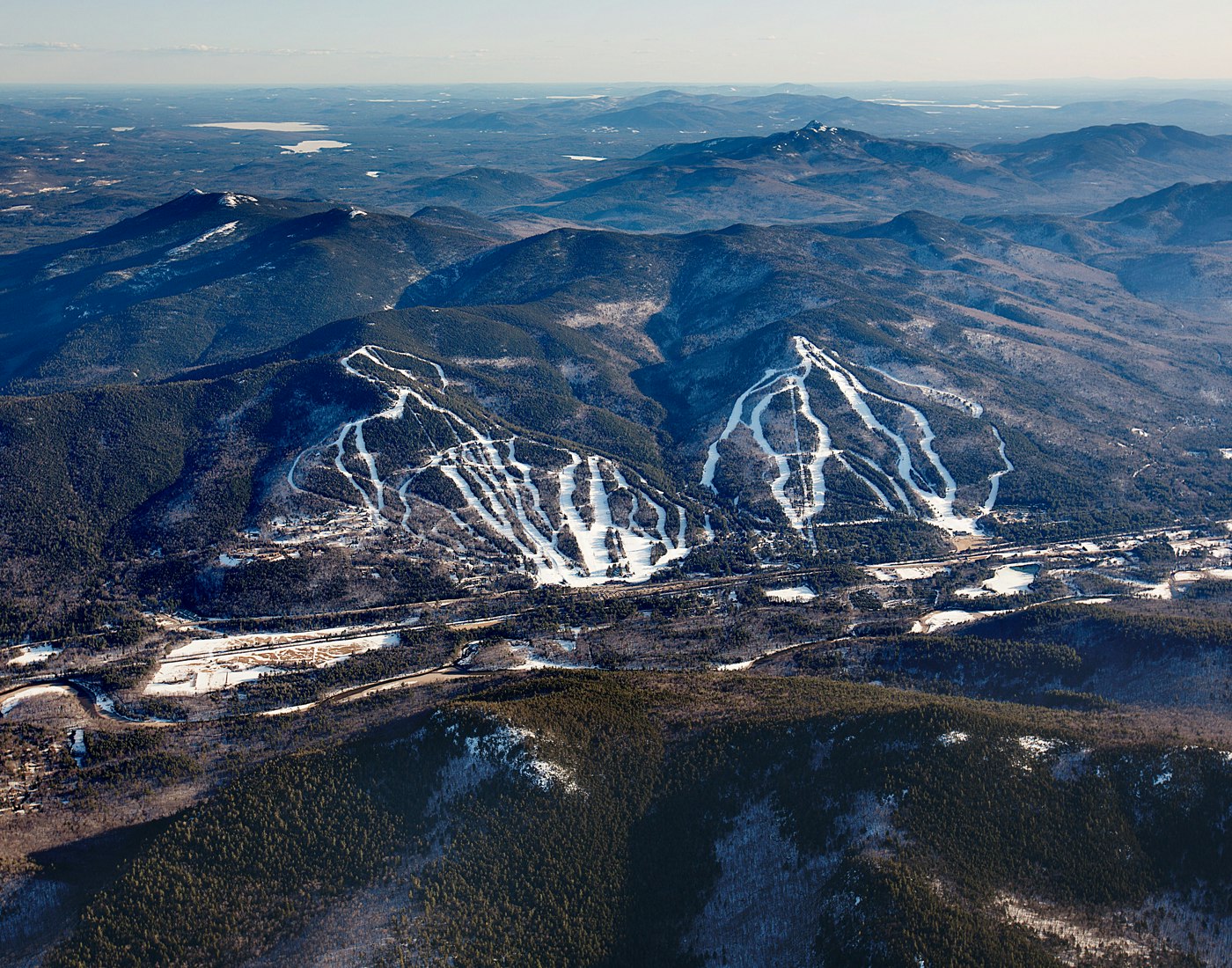
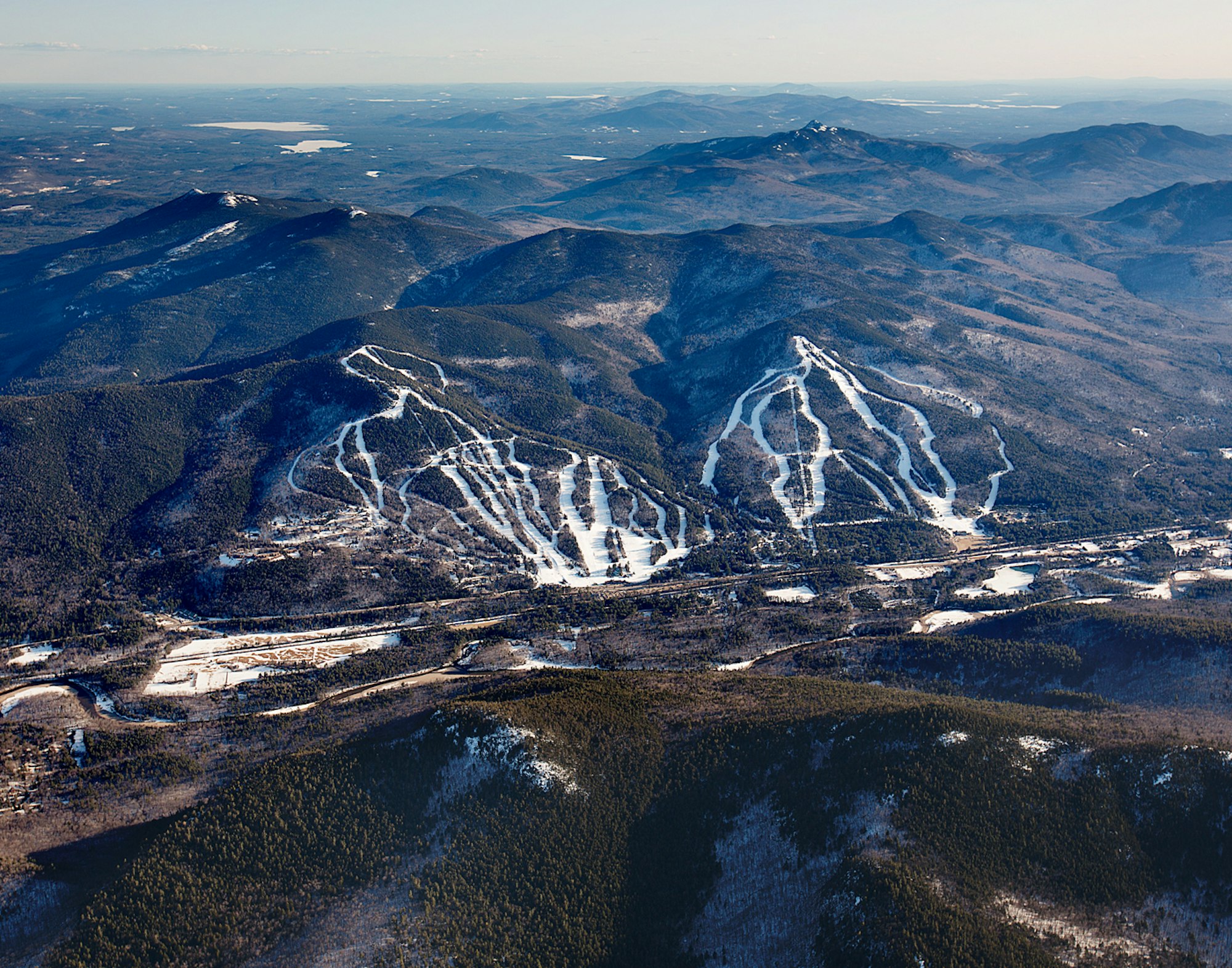
PHOTO: Courtesy of Attitash | LOCATION: Attitash, NH
The best way to think about Attitash’s 311 total acres is to focus on its two main peaks, dubbed Attitash and Bear. Each mountain offers a blend of options, open to all expert levels, but Bear is generally considered the more challenging side and where you’ll find the bulk of that aforementioned tree skiing. It’s also home to three terrain parks, built for beginner, intermediate and advanced skiers.
When one shifts gears and looks at the area’s backcountry scene, few skiers hold more wisdom and devotion than Andrew Drummond, a humble New Hampshire native and proud owner of the esteemed gear shop, Ski The Whites. He’s one of those guys who seems to always be skiing—he’s a tough dude to keep up with whether you’re ascending or descending. And his affinity for the Whites really says something, because he’s skied some of Planet Earth’s finest mountains.
“What makes the Whites unique is that it has the most expansive above-treeline terrain on the East Coast,” he says. “It’s also the most consistent, weather-wise. There are always weather patterns coming through here with snow. You hear about other places having bad winters, but no matter what, we’re going to be skiing into May here. I call this place my White Mountain Vortex.”
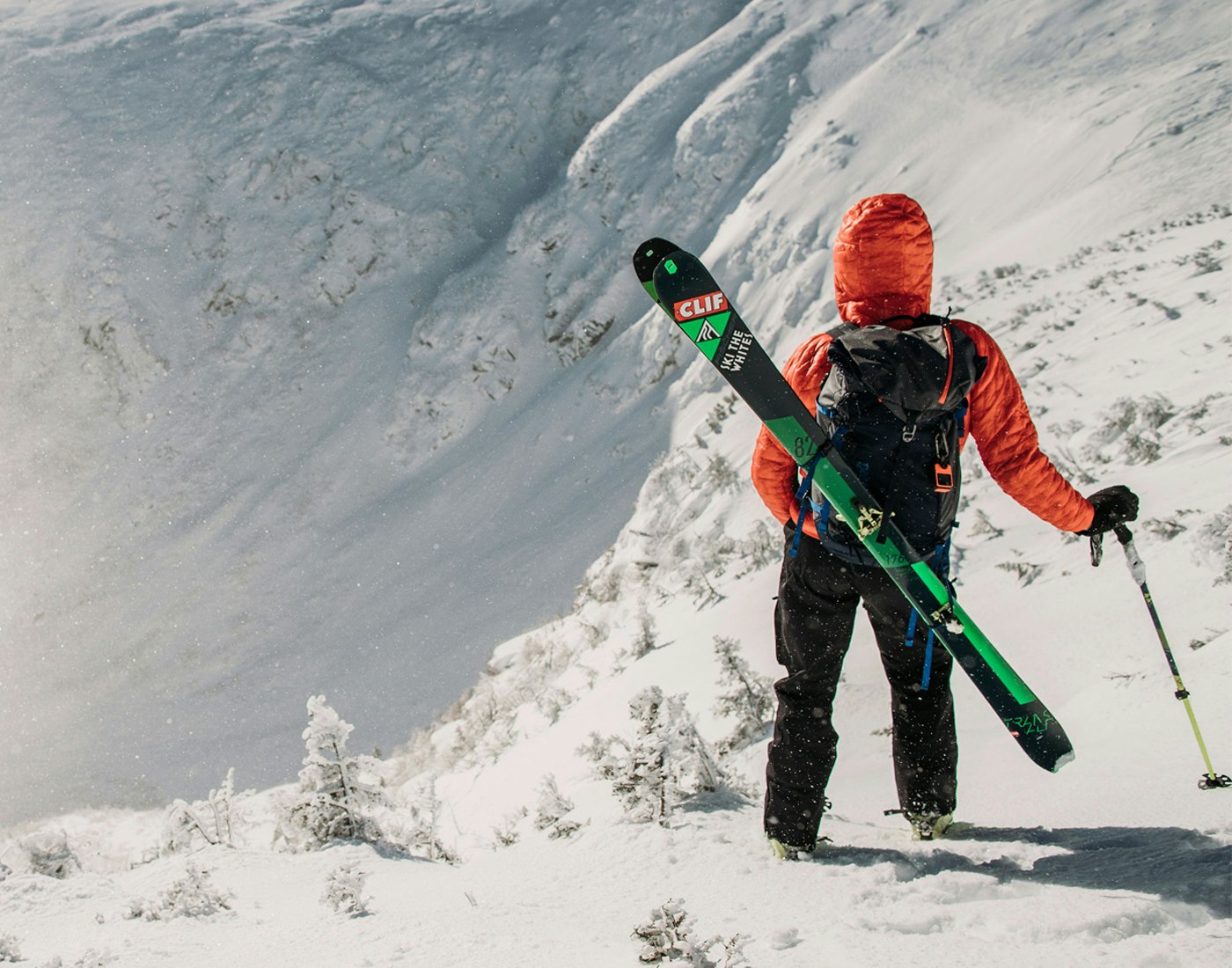
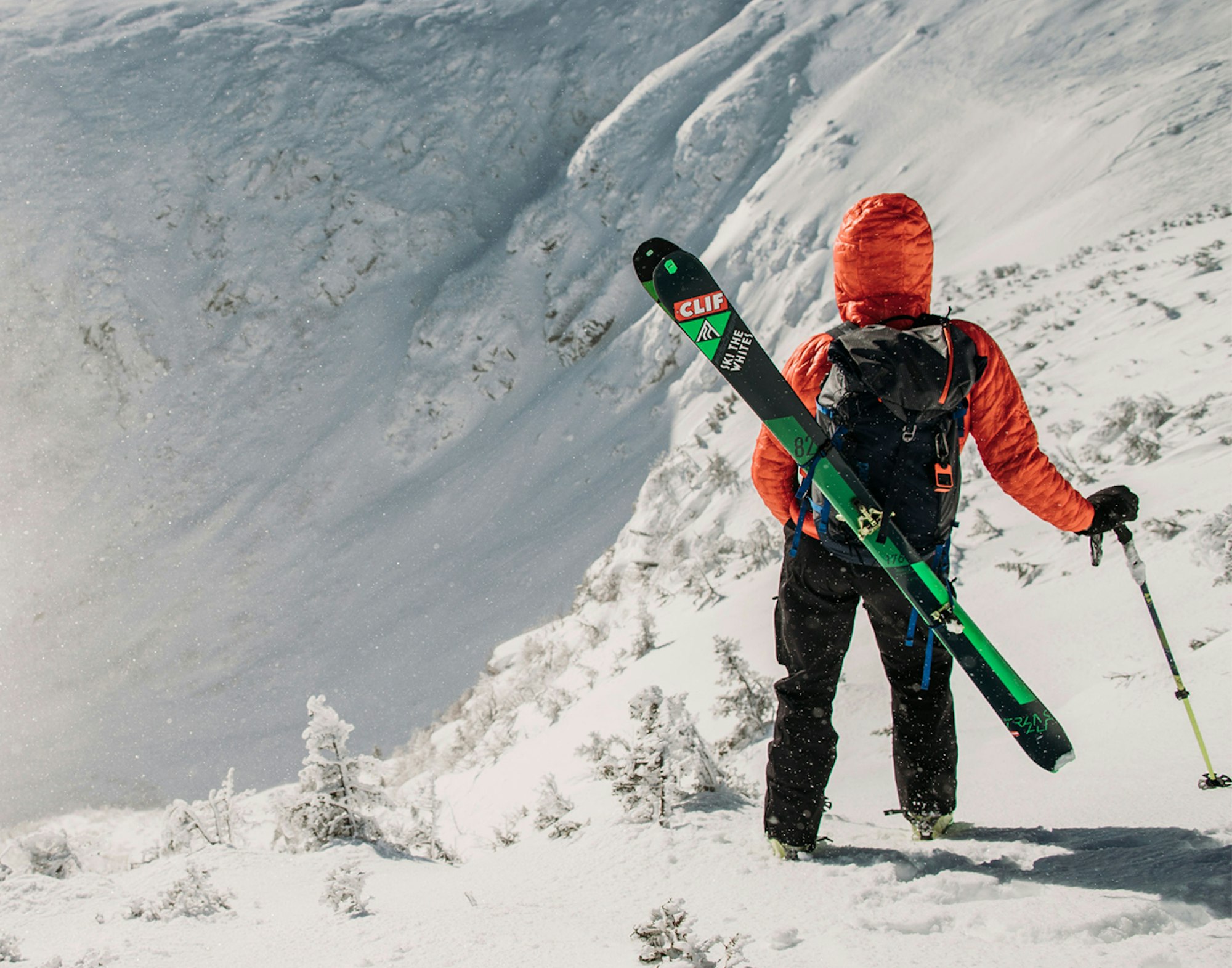
SKIER: Andrew Drummond | PHOTO: Chris Bennett | LOCATION: Mount Washington, NH
Throughout the Whites’ expanse, Mount Washington is, unsurprisingly, the most iconic; it’s also the most likely place to find Drummond. Washington is the tallest peak in New England, towering over major East Coast ski area summits like Killington and Sugarloaf, which are in the 4,000-foot category. Home to zones like Tuckerman and Huntington Ravine—with their jagged aesthetics and 50-degree, no-fall pitches—this giant is difficult to conquer for any skier.
“It doesn’t matter your ski level. If you go to drop into Tuckerman Ravine and there’s a little bit of breakable crust, it’s as scary as anywhere,” says Drummond, who firmly believes visitors should rely on ski guides for the best, safest experience possible. “It doesn’t matter if you’re Chris Davenport, you can be terrified up there. And, yeah, you can ski terrain like this on hero snow, but when you hit the shade line and the snow locks up, you know it’s the real deal.”
The Whites’ ski scene is an endlessly-discussable topic. There are so many ski areas, backcountry havens, businesses and local people to talk about that we could write an entire novel. But to really understand the draw, you’ve just got to go. The Whites’ central location is accessible enough for anyone on the East Coast to pull off a wicked trip. And keep this in mind: When choosing between Wildcat and Attitash in particular, there’s no reason to fret. Day tickets are valid at both ski areas. Hit Washington for a sunrise tour, spend the morning at one ski area, the afternoon at the other and you’ve got one extraordinary day of skiing.
But don’t forget: If you bring a brass monoscope and start exploring further, you might decide to anchor your ship and never leave.
Stat Sheet: Wildcat
Average Annual Snowfall: 207 inches
Skiable Terrain: 225 acres
Vertical Drop: 2,112 feet
Top Elevation: 4,062 feet
Stat Sheet: Attitash
Average Annual Snowfall: 120 inches
Skiable Terrain: 311+ acres
Vertical Drop: 1,750 feet
Top Elevation: 2,350 feet
This story originally appeared in FREESKIER 22.2, The Resort Guide.

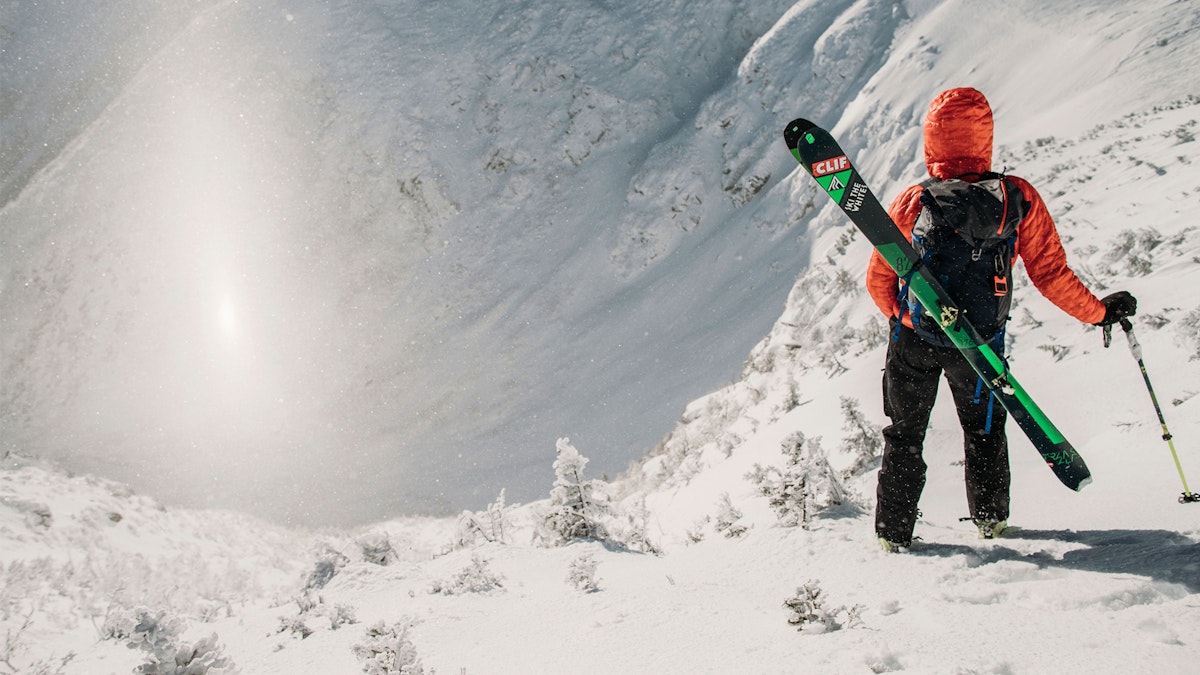

![[GIVEAWAY] Win a Head-to-Toe Ski Setup from IFSA](https://www.datocms-assets.com/163516/1765920344-ifsa.jpg?w=200&h=200&fit=crop)


![[GIVEAWAY] Win a Legendary Ski Trip with Icelantic's Road to the Rocks](https://www.datocms-assets.com/163516/1765233064-r2r26_freeskier_leaderboard1.jpg?auto=format&w=400&h=300&fit=crop&crop=faces,entropy)




![[GIVEAWAY] Win a Head-to-Toe Ski Setup from IFSA](https://www.datocms-assets.com/163516/1765920344-ifsa.jpg?auto=format&w=400&h=300&fit=crop&crop=faces,entropy)


